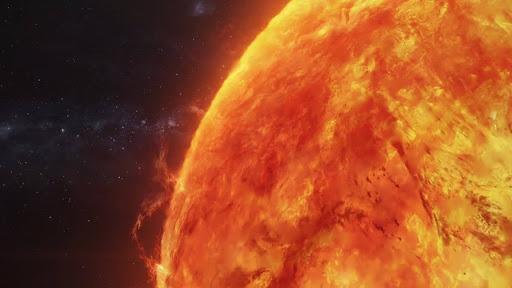
‘Peacock Jets’ on Sun Linked to Magnetic Flux Cancellation
The Sun, our star, is a fascinating and complex celestial body that has been the subject of human curiosity for centuries. Its dynamic behavior is crucial for our understanding of space weather and its impact on our technology. Recently, scientists have made a groundbreaking discovery about the Sun’s lower atmosphere, revealing the existence of ‘peacock jets’, recurrent fan-shaped eruptions that have been puzzling researchers for a long time.
These ‘peacock jets’ are a type of solar jet, which is a burst of energy that shoots up from the Sun’s surface, often accompanied by brightening of the solar atmosphere. They are called ‘peacock jets’ due to their distinctive fan-shaped appearance, with the ‘tail’ of the jet extending further away from the Sun than the ‘head’. These jets are not only visually striking but also play a significant role in shaping the Sun’s magnetic field and influencing the solar wind, the stream of charged particles that flows away from the Sun.
So, what drives the formation of these ‘peacock jets’? Scientists have finally cracked the code, discovering that they are powered by magnetic flux cancellation. This phenomenon occurs when two opposing magnetic fields meet and cancel each other out, releasing a massive amount of energy in the process.
To understand how this works, let’s take a step back and consider the Sun’s internal dynamics. The Sun’s magnetic field is generated by the movement of hot, ionized gas (plasma) in its interior. This plasma is made up of charged particles, such as electrons and protons, which are influenced by the Sun’s magnetic field. The magnetic field lines, which are like rubber bands, stretch out from the Sun’s surface and into space.
As the plasma moves through the Sun’s interior, it creates a complex web of magnetic field lines. These field lines can become twisted and tangled, leading to the formation of magnetic ‘knots’. When these knots are strong enough, they can break apart, causing the magnetic field lines to reconnect and release a huge amount of energy.
This process of magnetic breaking and reconnection is the driving force behind the ‘peacock jets’. When the magnetic field lines reconnect, they create a surge of energy that propels the plasma into the Sun’s lower atmosphere, where it forms the characteristic fan-shaped jet. The energy released during this process is so great that it can heat the surrounding plasma to millions of degrees, causing it to emit intense radiation and visible light.
The discovery of the ‘peacock jets’ is significant not only because it reveals a new mechanism for energy release in the Sun’s lower atmosphere but also because it provides valuable insights into the Sun’s internal dynamics. By studying these jets, scientists can gain a deeper understanding of the Sun’s magnetic field and its role in shaping the solar wind.
This deeper understanding is crucial for predicting space weather and safeguarding our technology. Space weather refers to the dynamic and variable conditions on the Sun and in the solar wind that can impact our technology and daily life. A better understanding of the Sun’s internal dynamics and the formation of ‘peacock jets’ can help scientists predict when and where these jets will occur, enabling them to issue timely warnings and take necessary precautions to mitigate their impact.
In conclusion, the discovery of ‘peacock jets’ on the Sun, powered by magnetic flux cancellation, is a significant breakthrough in our understanding of the Sun’s internal dynamics. These jets are not only visually striking but also play a crucial role in shaping the Sun’s magnetic field and influencing the solar wind. As scientists continue to study these jets, we can expect to gain even more insights into the Sun’s behavior and develop more accurate predictions of space weather.






